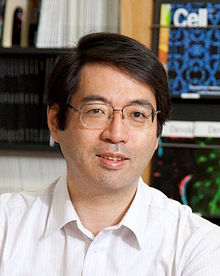Yoshiki_Sasai
Yoshiki Sasai
Japanese stem cell biologist
Yoshiki Sasai (笹井 芳樹, Sasai Yoshiki, 5 March 1962 – 5 August 2014) was a Japanese stem cell biologist. He developed methods to guide human embryonic stem cells (hESCs) into forming brain cortex, eyes (optic cups), and other organs in tissue culture. Sasai worked at the Riken Center for Developmental Biology (CDB) in Kobe, and was Director of the Laboratory for Organogenesis and Neurogenesis. Following his involvement in the 2014 STAP cell controversy, Sasai was found dead at Riken from an apparent suicide.
You can help expand this article with text translated from the corresponding article in Japanese. (August 2014) Click [show] for important translation instructions.
|
